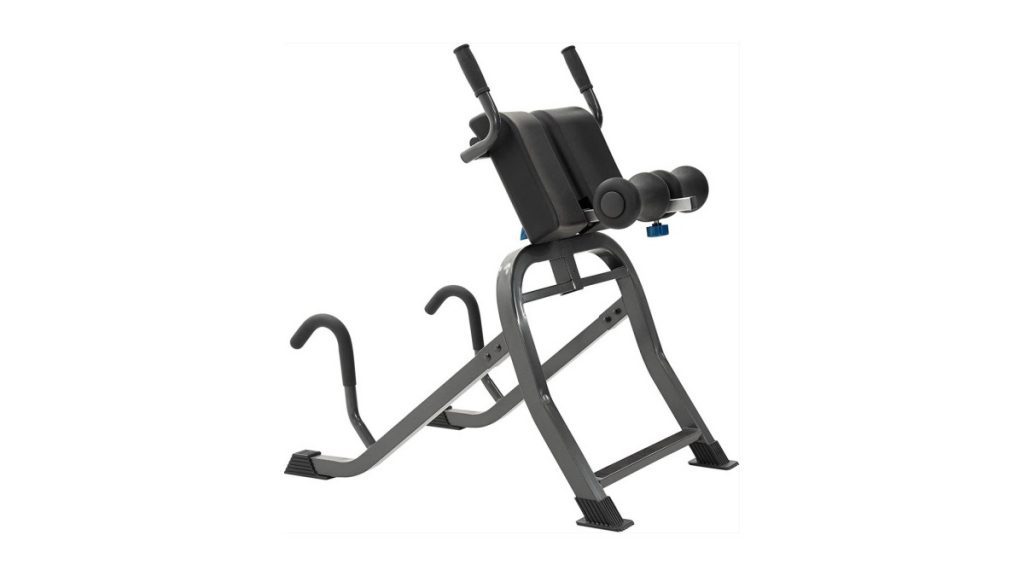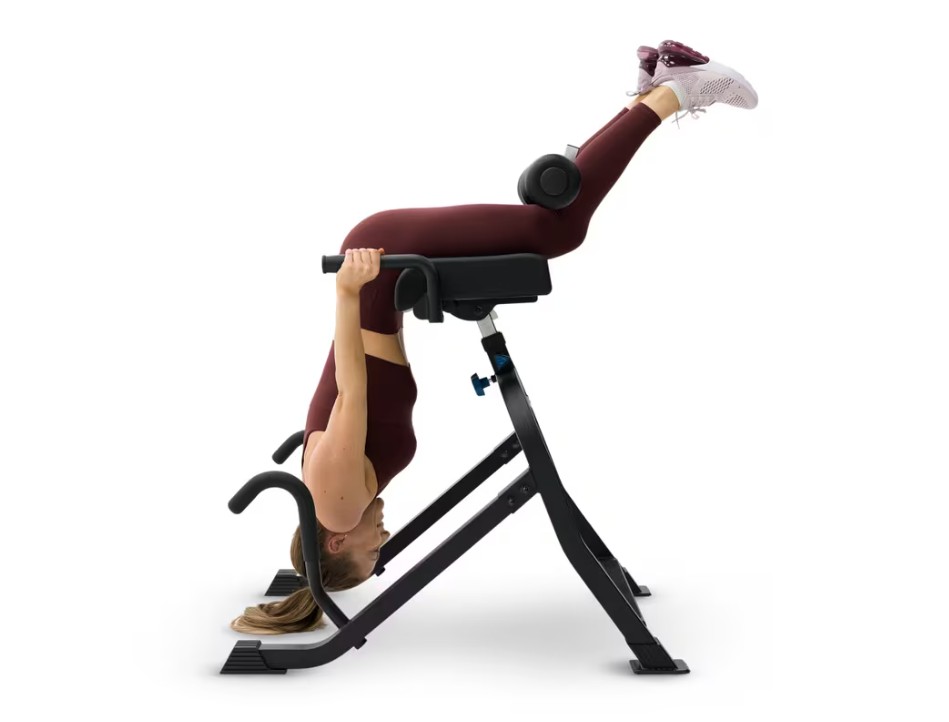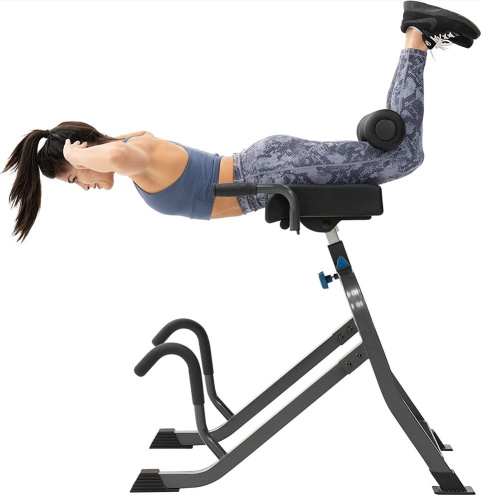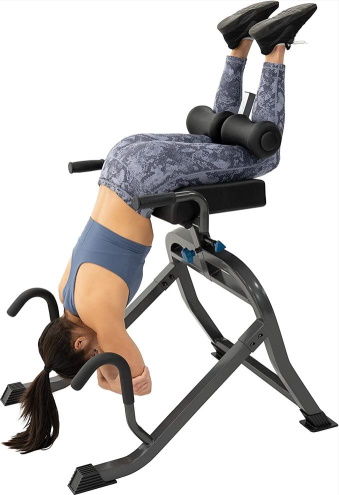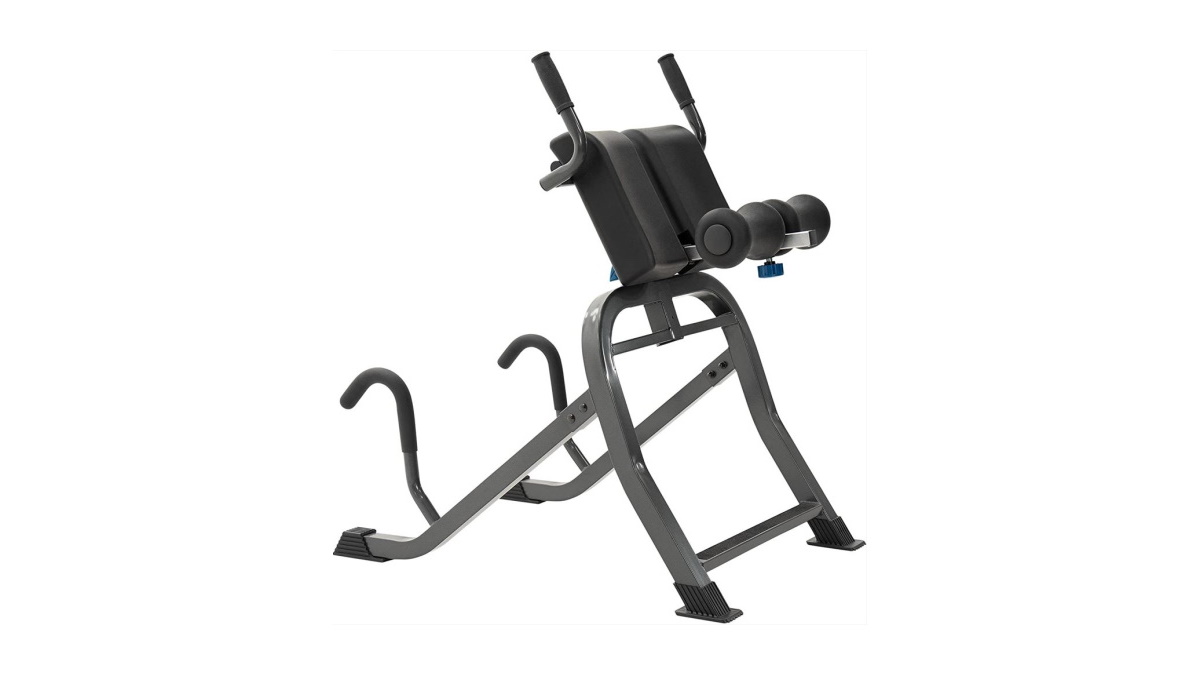Teeter DEX II Inversion & Core Training System Review
Estimated Reading Time: 8 minutes
By Brad Cooper, Inversion Table Expert with 10+ years of testing experience
Teeter DEX II
- Price
☆
- Performance
- Design
The Teeter DEX II is an Inversion & Core Training System designed to stretch and strengthen the muscles. It also easily incorporates inverted decompression into your workout.
It works well for those who suffer from lower back pain, nerve compression and stress. However, it’s not limited to just the back. It also helps with legs, torso, knees and ankles.
This is a forward-rotating, user-controlled inversion machine. The DEX II differs from a regular inversion table because it doesn’t stress the knees and ankles at all. Instead, your body inverts in a bent knee/bent hip position.
You can do various body-stretching and strengthening exercises on this device. All from the comfort of your own home.
Summary
In my experience testing inversion equipment, the DEX II is very easy to set up. It’s also well built and very sturdy, ensuring durability even with repeated use.
On the downside, the device may cause some discomfort when you first use it. This is normal and gets better with time.
This device offers a unique solution for stretching the lower back. It increases decompression of the spine to maximize effectiveness for a variety of inverted stretches and exercises.
A Review of the Teeter DEX II Inversion & Core Training System
Assembly
This machine is heavy and solidly built. Despite its weight, it’s very easy to put together.
I found the assembly process straightforward. Most people can handle it without calling for help.
Design
What you’ll certainly notice is that the DEX II looks nothing like a traditional inversion table.
It has adjustable supports that put your body in a fixed 90/90-degree position. This helps flatten the lumbar curve for greater separation of the lower vertebrae.
This unique design works well for people who suffer from stress and nerve compression in their ankles, calves and knees. If you feel uncomfortable using a traditional inversion table, this could be your solution.
The Teeter DEX II allows users to decompress their backs and hips. It does this by supporting the body’s weight mainly through the upper thighs. This reduces discomfort significantly.
It reduces the load on the hamstrings by placing the knees in a relaxed 90° position. This is much more effective than forcing straight-legged exercises.
Build Quality
The DEX II features quality construction throughout. It consists of a sturdy, square steel tube design.
The powder-coated finish is high quality and scratch-resistant. The padded vinyl mat is washable and built to last.
After testing it extensively, I can say the build quality exceeds most home fitness equipment.
Capacity
The Teeter DEX II works for users between 4’8″ and 6’6″ tall. It supports up to 350 lbs, which is an upgrade from the previous 300 lb capacity.
When fully assembled, the dimensions are 41″ x 29″ x 45″. It weighs 67 lbs.
Using the Teeter DEX II
Mounting the DEX II is actually easier than using an inversion table.
Here’s what you do: Walk up to it, lean forward, and grasp the lower handles. Then hang with a 90 degree bend in the waist. You don’t lie down on your back like with regular inversion tables.
All the inverted movements are user-controlled. This applies to both stretching and strengthening exercises.
The ergonomic design lets you do various exercises. Not just for the back, but for your entire body. You can also incorporate decompression into your workout.
Once in position, you can perform many different inverted stretches and exercises. These range from spine stretches to back extensions.
The traction handles let you stretch the lower back even more. They increase the decompression of the spine for better results.
What I like about using the DEX II is that most traction goes to your spine and hip joints. It doesn’t stress your ankles and knee joints like hanging inversion does.
You can also use this device for push-ups. This strengthens your abdomen, obliques, biceps, shoulders, chest and lower back all at once.
Some Other Features of the DEX II
- Comfortable Lap Support: Holds you in a fixed 90/90-degree position for many different inverted stretches and exercises
- Adjustable Leg Supports: You can adjust these for maximum comfort and security
- Washable Padded Vinyl Mat: Quality materials that are durable and easy to clean
- Traction Handles: These offer increased manual decompression of the spine to maximize the stretch
- Multi-Purpose Lower Handles: Provide support for user-controlled rotation and work as resistance tools for stretching
Safety
The corner feet give the DEX II a remarkably stable feel. They prevent sliding and protect your floors too.
During my testing, I never felt unsafe or unstable on this device.
Warranty
Teeter covers the DEX II with a five-year warranty. This is one of the best warranties in the industry.
Pros
- Very easy to set up and use
- Well-built and very sturdy
- Rubber coated hand grips
- Includes a Teeter 5-year warranty
- Comfortable padding throughout
- Easily portable despite its weight
- Supports users weighing up to 350 lbs
- No stress on ankles and knees like traditional inversion tables
- User-controlled inversion for safety
- Multi-functional design
Cons
- May cause some discomfort when you first use it
- Knee pads are non-adjustable for length of leg
- Takes time to master each exercise movement
- Results are progressive, not instant
- Higher price point than basic inversion tables
- Learning curve required
Factors to Consider
Because of the DEX II’s multi-functional design, you get more than just back pain relief. You also get other exercise benefits.
The DEX II takes up less space than a traditional inversion table too.
With this device, your upper body weight isn’t pulling at your knees and ankles. This is different from how regular inversion tables work.
The pressure on your thighs does take some getting used to. But for people who find that hanging causes ankle and knee pain, this is a much better alternative.
How Can The Teeter DEX II Help You?
Some people experience lower back pain but can’t use a traditional inversion table. This happens because of ankle and knee pain. For these people, the Teeter DEX II should be seriously considered.
The versatility of its design means you can use it for other forms of exercise as well.
If you’re comparing different Teeter models, you might also want to check out the Teeter FitSpine X3 or see our complete Teeter comparison chart.
For those interested in traditional hanging inversion, our 5 best inversion table reviews might be more helpful.
What Customers Say
The DEX II gets great ratings on the Teeter site. Many customers say it’s excellent for decompressing the spine and relieving back and hip pain. They feel it’s well worth the price.
Several customers mentioned the product is extremely well made and solid. They also found it very easy to assemble.
Others liked that it doesn’t take up very much space.
One customer with herniated discs said: “The DEX II is amazing for stretching the lower back and allowing fluid to flow back into those areas. I used to hang on pull up bars however grip strength was a limiter. With this device I can stretch/relax 3 times a day.”
Another user who avoided fusion surgery reported: “4 doctors said I need fusion surgery ASAP. I’ve severe degenerative disks and tried a lot of other rigs. This does it. You can feel the pops just hanging or using handles for added traction.”
A 73-year-old customer shared: “I haven’t been to chiropractor in 3 months and my back feels great” after using the DEX II regularly.
Bottom Line
The Teeter DEX II offers a unique approach to inversion therapy. It solves many comfort issues that come with traditional inversion tables.
In my opinion, this device works best for people who:
- Experience ankle or knee pain with regular inversion tables
- Want a multi-functional piece of equipment
- Prefer user-controlled, gradual inversion
- Need commercial-grade durability
The higher price point reflects the quality and versatility you get. For people who can’t tolerate traditional inversion tables, this could be the perfect solution.
I recommend trying it if you’ve had trouble with regular inversion tables but still want the benefits of spinal decompression.
Related Reading
If you’re interested in learning more about inversion therapy, check out these helpful articles:
- How to Use an Inversion Table
- Do Inversion Tables Work?
- Inversion Therapy for Back Pain
- Inversion Tables Pros and Cons
- Teeter vs Ironman Comparison
- Inversion Table Buyer’s Guide
Before you use any product for health care, always consult with your physician or primary healthcare provider and seek the appropriate advice and supervision prior to use.
This post may contain affiliate links for which I could earn a commission. This does not change the price you would pay.

